Top companies trust Airbyte to centralize their Data









This includes selecting the data you want to extract - streams and columns -, the sync frequency, where in the destination you want that data to be loaded.




This includes selecting the data you want to extract - streams and columns -, the sync frequency, where in the destination you want that data to be loaded.

Set up a source connector to extract data from in Airbyte
Choose from one of 300+ sources where you want to import data from. This can be any API tool, cloud data warehouse, database, data lake, files, among other source types. You can even build your own source connector in minutes with our no-code connector builder.


Configure the connection in Airbyte
Ship more quickly with the only solution that fits ALL your needs.
As your tools and edge cases grow, you deserve an extensible and open ELT solution that eliminates the time you spend on building and maintaining data pipelines
Leverage the largest catalog of connectors
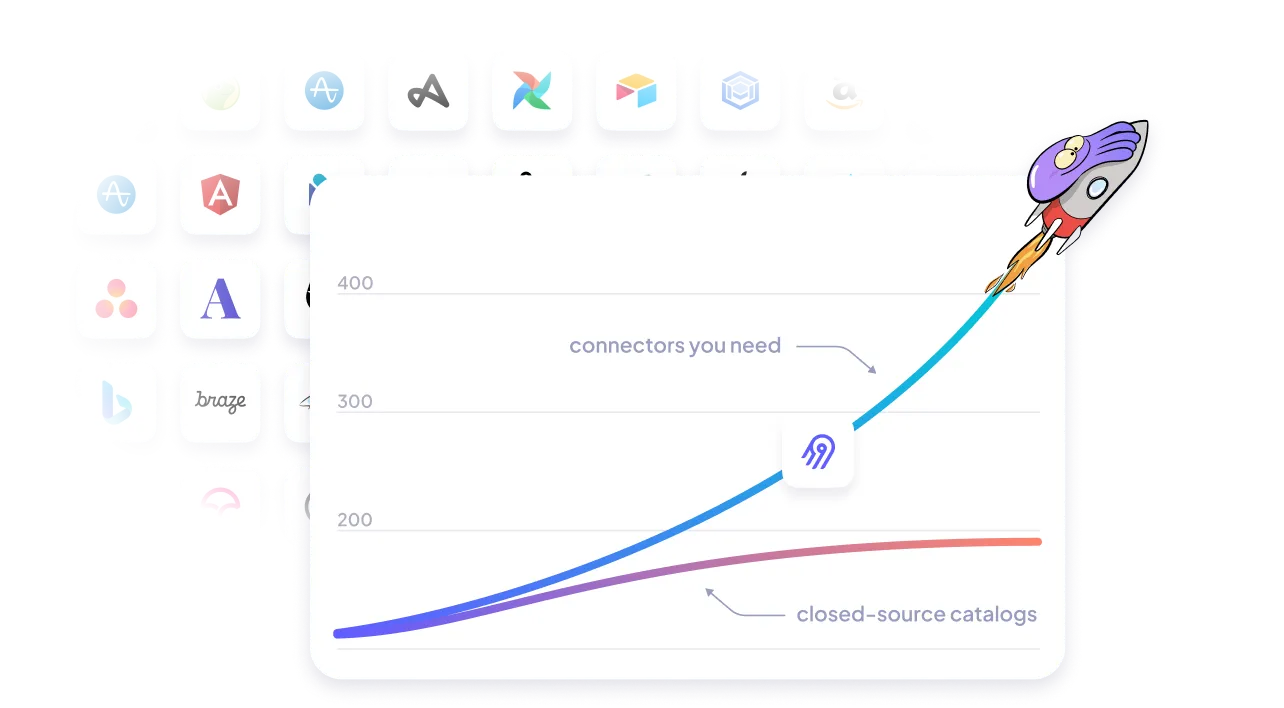
Cover your custom needs with our extensibility
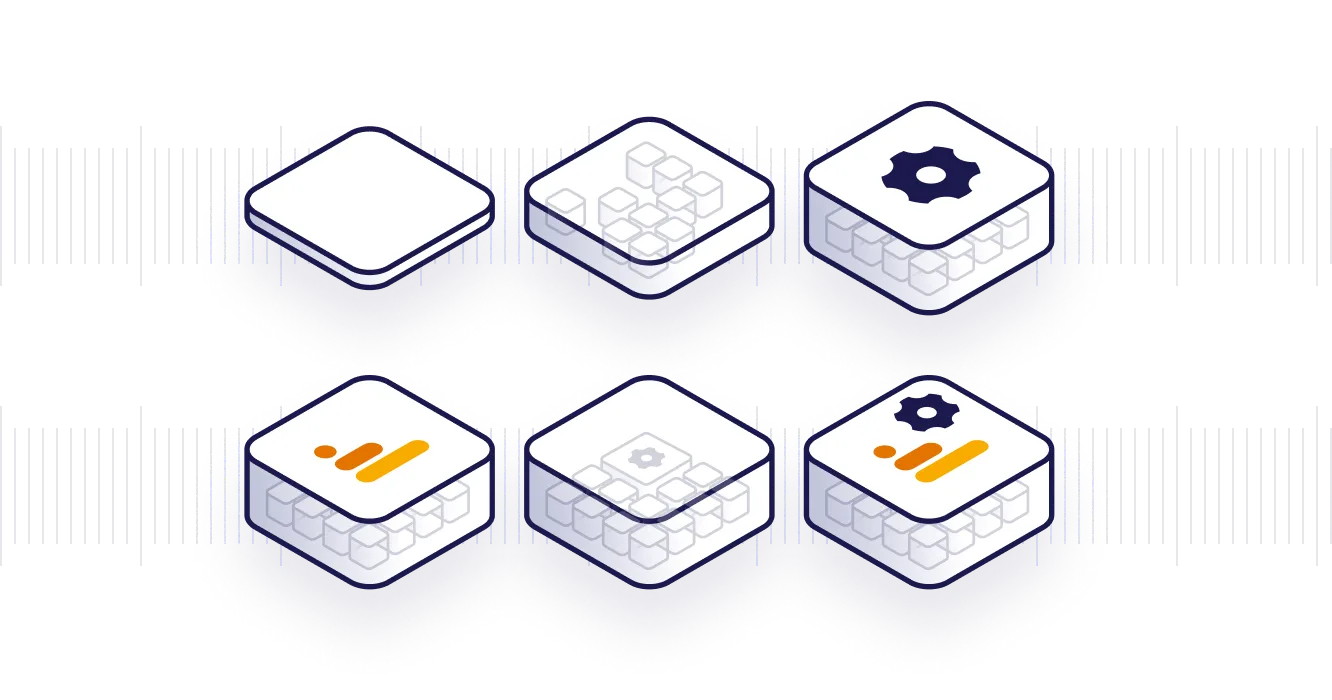
Free your time from maintaining connectors, with automation
- Automated schema change handling, data normalization and more
- Automated data transformation orchestration with our dbt integration
- Automated workflow with our Airflow, Dagster and Prefect integration
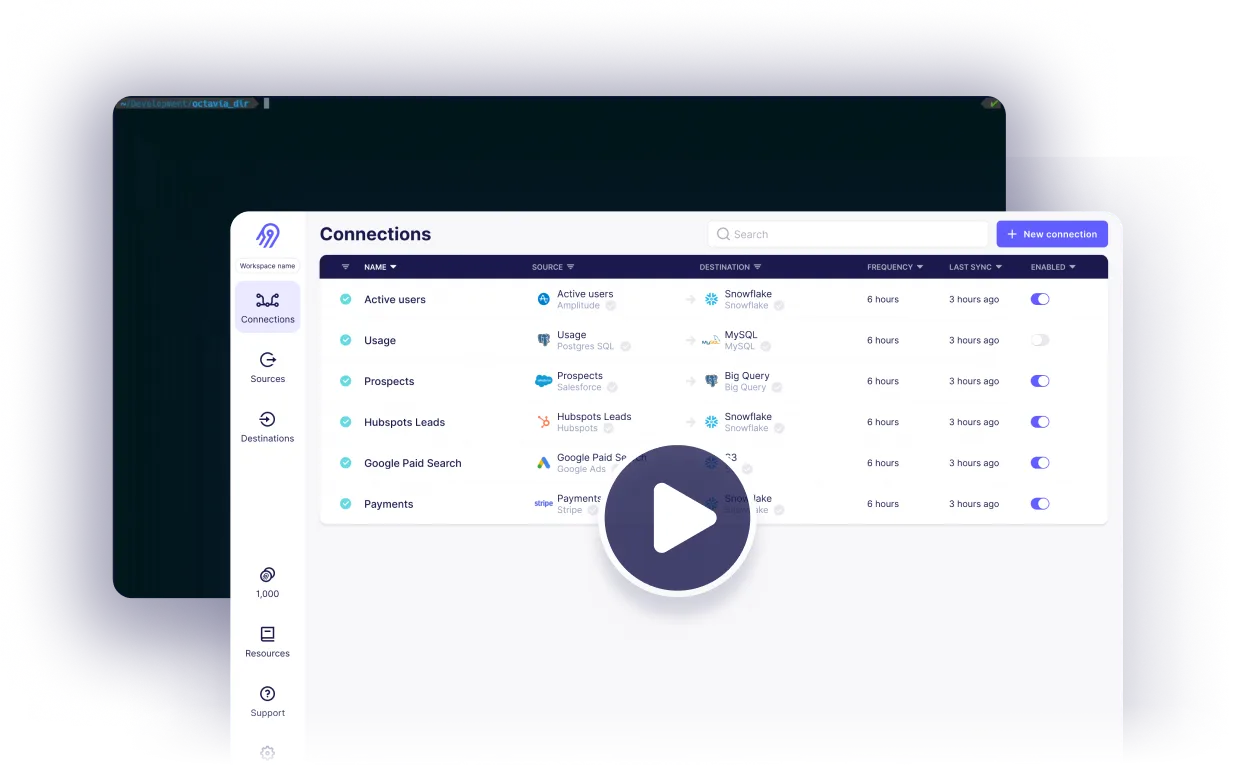
Reliability at every level



Ship more quickly with the only solution that fits ALL your needs.
As your tools and edge cases grow, you deserve an extensible and open ELT solution that eliminates the time you spend on building and maintaining data pipelines
Leverage the largest catalog of connectors

Cover your custom needs with our extensibility

Free your time from maintaining connectors, with automation
- Automated schema change handling, data normalization and more
- Automated data transformation orchestration with our dbt integration
- Automated workflow with our Airflow, Dagster and Prefect integration

Reliability at every level



Ship more quickly with the only solution that fits ALL your needs.
As your tools and edge cases grow, you deserve an extensible and open ELT solution that eliminates the time you spend on building and maintaining data pipelines
Leverage the largest catalog of connectors

Cover your custom needs with our extensibility

Free your time from maintaining connectors, with automation
- Automated schema change handling, data normalization and more
- Automated data transformation orchestration with our dbt integration
- Automated workflow with our Airflow, Dagster and Prefect integration

Reliability at every level



Move large volumes, fast.
Change Data Capture.
Security from source to destination.

We support the CDC methods your company needs
Log-based CDC



Timestamp-based CDC


Airbyte Open Source


Airbyte Cloud

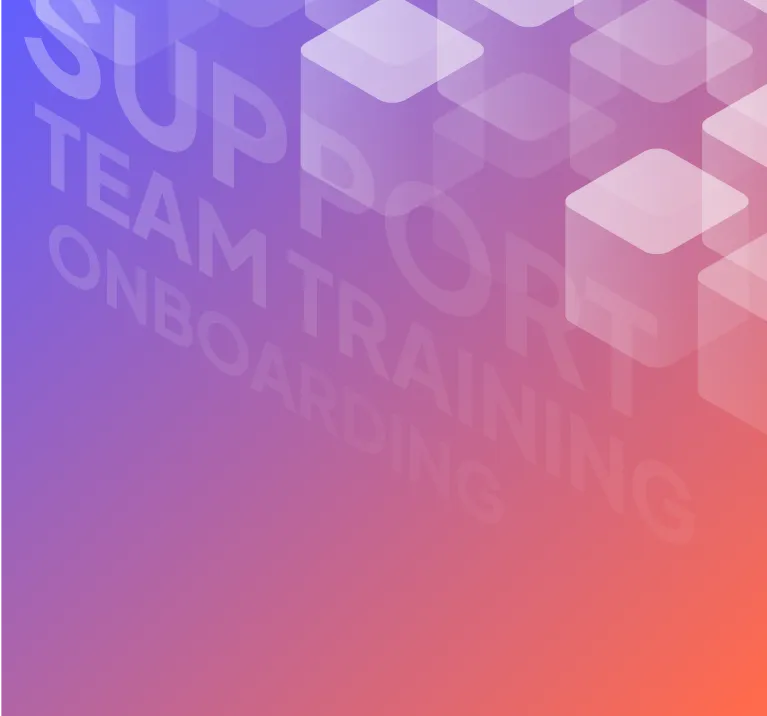
Airbyte Enterprise

Why choose Airbyte as the backbone of your data infrastructure?
Keep your data engineering costs in check
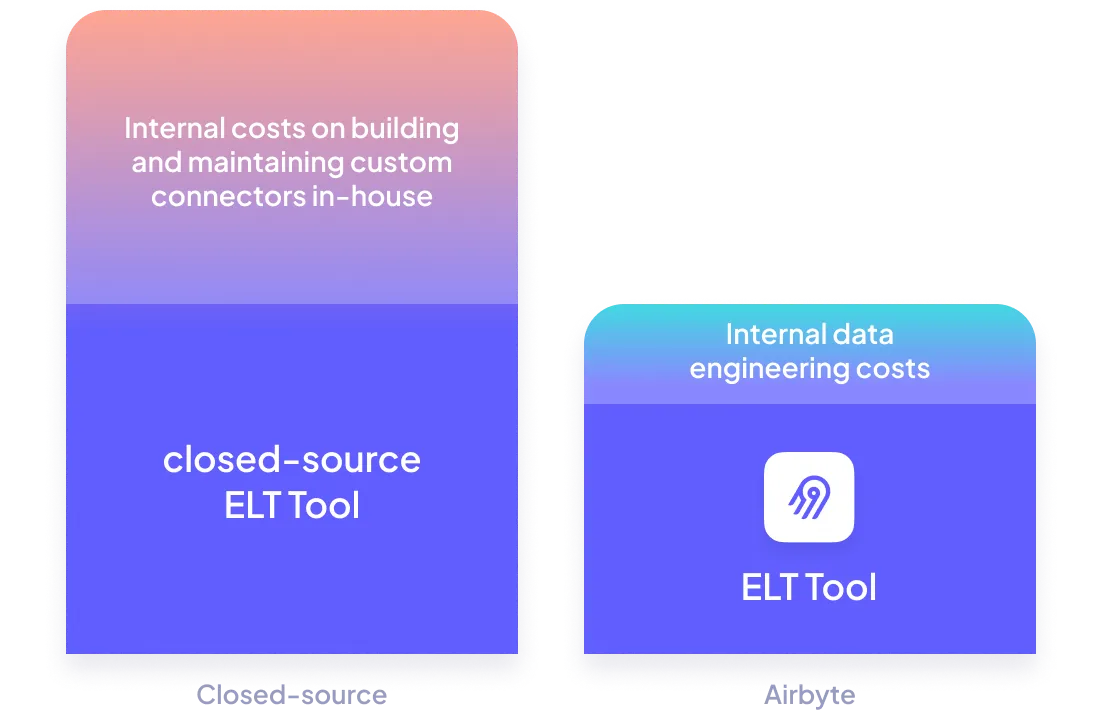
Get Airbyte hosted where you need it to be
- Airbyte Cloud: Have it hosted by us, with all the security you need (SOC2, ISO, GDPR, HIPAA Conduit).
- Airbyte Enterprise: Have it hosted within your own infrastructure, so your data and secrets never leave it.

White-glove enterprise-level support
Including for your Airbyte Open Source instance with our premium support.
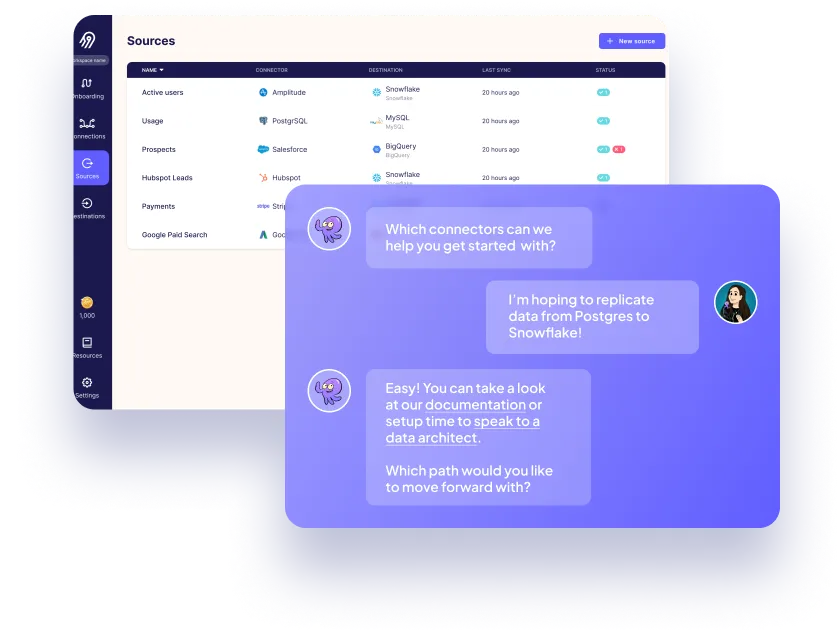
Airbyte supports a growing list of destinations, including cloud data warehouses, lakes, and databases.
Airbyte supports a growing list of destinations, including cloud data warehouses, lakes, and databases.
Airbyte supports a growing list of sources, including API tools, cloud data warehouses, lakes, databases, and files, or even custom sources you can build.



Fnatic, based out of London, is the world's leading esports organization, with a winning legacy of 16 years and counting in over 28 different titles, generating over 13m USD in prize money. Fnatic has an engaged follower base of 14m across their social media platforms and hundreds of millions of people watch their teams compete in League of Legends, CS:GO, Dota 2, Rainbow Six Siege, and many more titles every year.
Ready to get started?
FAQs
What is ETL?
ETL, an acronym for Extract, Transform, Load, is a vital data integration process. It involves extracting data from diverse sources, transforming it into a usable format, and loading it into a database, data warehouse or data lake. This process enables meaningful data analysis, enhancing business intelligence.
Pocket, the premier Save for Later app, lets you consume and share content whenever you want, wherever you want, even without an internet connection. When you come across an article, video or a webpage you'd like to readbut can't at that time, save it to Pocket. You can then read or watch it whenever you have a moment, whether it's on the couch, during your commute, on the plane, train, or practically anywhere.
Pocket's API provides access to various types of data related to the user's Pocket account. The categories of data that can be accessed through the API are:
1. Articles: This includes the full text of articles saved by the user, along with metadata such as title, author, and URL.
2. Tags: The API allows access to the tags associated with each article, which can be used to organize and filter saved articles.
3. Favorites: The API provides access to the user's favorite articles, which can be used to highlight important or frequently referenced content.
4. Reads: The API tracks the user's reading history, including the date and time each article was read.
5. Recommendations: Pocket's API can provide personalized article recommendations based on the user's reading history and preferences.
6. Stats: The API provides access to various statistics related to the user's Pocket account, such as the number of articles saved, read, and favorited.
7. Authentication: The API allows developers to authenticate users and access their Pocket data securely.
What is ELT?
ELT, standing for Extract, Load, Transform, is a modern take on the traditional ETL data integration process. In ELT, data is first extracted from various sources, loaded directly into a data warehouse, and then transformed. This approach enhances data processing speed, analytical flexibility and autonomy.
Difference between ETL and ELT?
ETL and ELT are critical data integration strategies with key differences. ETL (Extract, Transform, Load) transforms data before loading, ideal for structured data. In contrast, ELT (Extract, Load, Transform) loads data before transformation, perfect for processing large, diverse data sets in modern data warehouses. ELT is becoming the new standard as it offers a lot more flexibility and autonomy to data analysts.
What is ETL?
ETL, an acronym for Extract, Transform, Load, is a vital data integration process. It involves extracting data from diverse sources, transforming it into a usable format, and loading it into a database, data warehouse or data lake. This process enables meaningful data analysis, enhancing business intelligence.
Pocket, the premier Save for Later app, lets you consume and share content whenever you want, wherever you want, even without an internet connection. When you come across an article, video or a webpage you'd like to readbut can't at that time, save it to Pocket. You can then read or watch it whenever you have a moment, whether it's on the couch, during your commute, on the plane, train, or practically anywhere.
Pocket's API provides access to various types of data related to the user's Pocket account. The categories of data that can be accessed through the API are:
1. Articles: This includes the full text of articles saved by the user, along with metadata such as title, author, and URL.
2. Tags: The API allows access to the tags associated with each article, which can be used to organize and filter saved articles.
3. Favorites: The API provides access to the user's favorite articles, which can be used to highlight important or frequently referenced content.
4. Reads: The API tracks the user's reading history, including the date and time each article was read.
5. Recommendations: Pocket's API can provide personalized article recommendations based on the user's reading history and preferences.
6. Stats: The API provides access to various statistics related to the user's Pocket account, such as the number of articles saved, read, and favorited.
7. Authentication: The API allows developers to authenticate users and access their Pocket data securely.
What is ELT?
ELT, standing for Extract, Load, Transform, is a modern take on the traditional ETL data integration process. In ELT, data is first extracted from various sources, loaded directly into a data warehouse, and then transformed. This approach enhances data processing speed, analytical flexibility and autonomy.
Difference between ETL and ELT?
ETL and ELT are critical data integration strategies with key differences. ETL (Extract, Transform, Load) transforms data before loading, ideal for structured data. In contrast, ELT (Extract, Load, Transform) loads data before transformation, perfect for processing large, diverse data sets in modern data warehouses. ELT is becoming the new standard as it offers a lot more flexibility and autonomy to data analysts.
What is ETL?
ETL, an acronym for Extract, Transform, Load, is a vital data integration process. It involves extracting data from diverse sources, transforming it into a usable format, and loading it into a database, data warehouse or data lake. This process enables meaningful data analysis, enhancing business intelligence.
Pocket, the premier Save for Later app, lets you consume and share content whenever you want, wherever you want, even without an internet connection. When you come across an article, video or a webpage you'd like to readbut can't at that time, save it to Pocket. You can then read or watch it whenever you have a moment, whether it's on the couch, during your commute, on the plane, train, or practically anywhere.
Pocket's API provides access to various types of data related to the user's Pocket account. The categories of data that can be accessed through the API are:
1. Articles: This includes the full text of articles saved by the user, along with metadata such as title, author, and URL.
2. Tags: The API allows access to the tags associated with each article, which can be used to organize and filter saved articles.
3. Favorites: The API provides access to the user's favorite articles, which can be used to highlight important or frequently referenced content.
4. Reads: The API tracks the user's reading history, including the date and time each article was read.
5. Recommendations: Pocket's API can provide personalized article recommendations based on the user's reading history and preferences.
6. Stats: The API provides access to various statistics related to the user's Pocket account, such as the number of articles saved, read, and favorited.
7. Authentication: The API allows developers to authenticate users and access their Pocket data securely.
1. First, navigate to the Pocket source connector page on Airbyte.com.
2. Click on the "Create a new connection" button.
3. In the "Configuration" tab, enter a name for your connection.
4. Enter your Pocket consumer key and access token. These can be found in your Pocket developer account.
5. Click on the "Test" button to ensure that your credentials are correct and that Airbyte can connect to your Pocket account.
6. Once the test is successful, click on the "Save & Continue" button.
7. In the "Sync Schema" tab, you can choose which fields you want to sync from your Pocket account.
8. Click on the "Save & Continue" button.
9. In the "Scheduling" tab, you can choose how often you want Airbyte to sync your Pocket data.
10. Click on the "Save & Continue" button.
11. In the "Destination" tab, you can choose where you want to send your Pocket data. This could be a data warehouse, a database, or a cloud storage service.
12. Click on the "Save & Continue" button.
13. Finally, click on the "Create Connection" button to complete the process. Your Pocket data will now be synced to your chosen destination on a regular basis according to your scheduling preferences.
What is ELT?
ELT, standing for Extract, Load, Transform, is a modern take on the traditional ETL data integration process. In ELT, data is first extracted from various sources, loaded directly into a data warehouse, and then transformed. This approach enhances data processing speed, analytical flexibility and autonomy.
Difference between ETL and ELT?
ETL and ELT are critical data integration strategies with key differences. ETL (Extract, Transform, Load) transforms data before loading, ideal for structured data. In contrast, ELT (Extract, Load, Transform) loads data before transformation, perfect for processing large, diverse data sets in modern data warehouses. ELT is becoming the new standard as it offers a lot more flexibility and autonomy to data analysts.





































